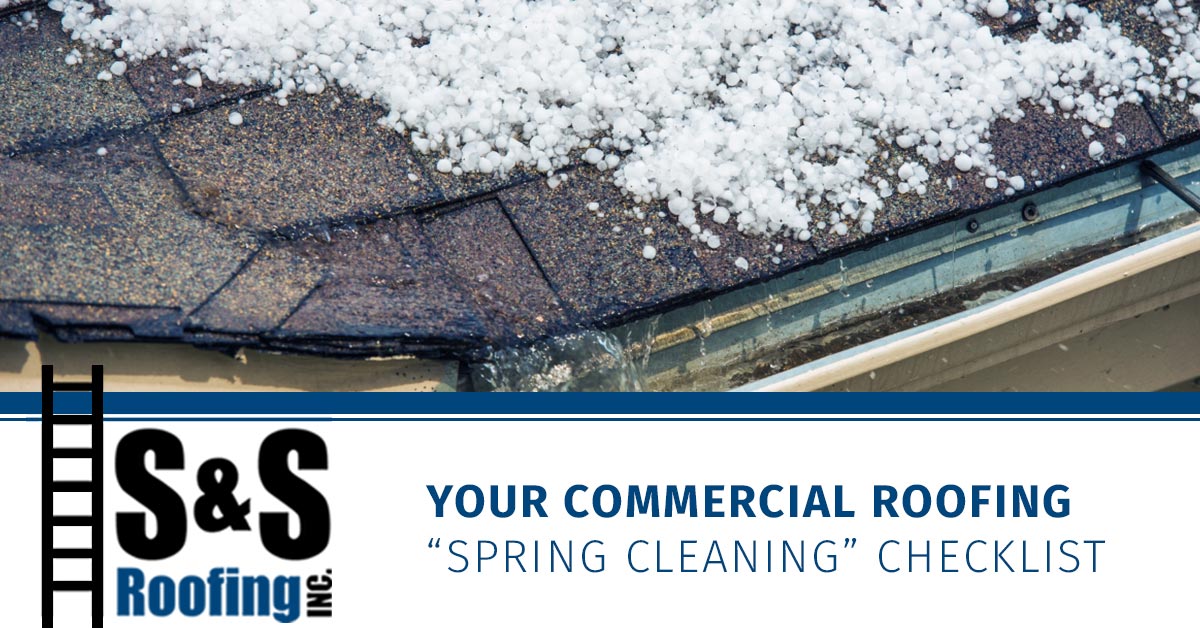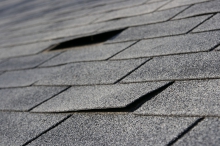
As we discussed in a previous post, countless companies and small businesses invest a great deal of time preparing their roofs for the colder winter months, without paying much attention or thought to the preparations that they should make for the warmer spring months. As your go-to company for commercial roof repair in New Jersey, we have compiled a short checklist of “spring cleaning” or roof maintenance tasks that we think might reduce the future damages to your commercial roof.
Your Spring Cleaning Checklist
 Maintaining the integrity of your roof is extremely important when looking at the life of your commercial roof. Like most things, a well-maintained roof is bound to last longer when it is taken care of. During the course of winter, two things can be drastically damaged; your drainage systems, and the physical structure of your roof. Luckily, regularly checking on them can increase the lifetime of your roof. So what should you look for when you check on your roof?
Maintaining the integrity of your roof is extremely important when looking at the life of your commercial roof. Like most things, a well-maintained roof is bound to last longer when it is taken care of. During the course of winter, two things can be drastically damaged; your drainage systems, and the physical structure of your roof. Luckily, regularly checking on them can increase the lifetime of your roof. So what should you look for when you check on your roof?
Check The Drainage Systems Of The Roof
No matter what kind of drainage system is installed on your business’s roof, it is extremely important to periodically inspect how well your commercial roof is draining before spring starts. Gutters, inner drains, and scuppers are all vulnerable to damage during the winter months, making a quick spring cleaning essential.
Gutters
If your building has a traditional gutter system, it is important that you inspect the gutters before springtime. Over the course of winter, gutters are known for accumulating large amounts of ice and snow, thus affecting the integrity of the drainage system. Inspecting your gutters for cracks and other damages caused by ice and snow before spring starts is a good way to ensure that your drainage system will work efficiently upon the first rainfall. With traditional gutters, it is also important to inspect drainage system for foliage and debris, even if you cleared out the foliage before winter began. Trash and other debris may find themselves in your drainage system because of the harsh winds of winter storms, and your gutters are exactly where the debris will stay unless you regularly inspect your commercial roof. With regular inspection, you might just be able to avoid calling your local roofing contractor for repairs.
Inner Drains
Inner drains are an incredible solution to decrease your commercial building’s chance of having pipes freeze in the winter, as the pipe moves through the warmth of the building, however, they do have their downfalls. If your business has a flat roof, it is likely that your building is equipped with an inner drain system. With an inner drain system, the most important thing for you to do is to keep your roof clean of debris. Winter storms have been known to pick up and generate debris, making clear roof drains extremely important. Blocked drains may lead to water build up, eventually causing damages to your building’s roof. Damaging your inner drain system is something that you want to avoid at all costs, being that a professional roofing repair contractor is often needed to complete repairs.
Scuppers
Scuppers may be the most efficient type of roof drainage system when it comes to taking on the transition to spring, being that they are quite simple so that not a lot could break. The only real risk of damage to the scupper drainage system is the location of the downspout, so be sure to regularly check for debris or other obstructions. If damages do occur, be sure to contact your local roofing repair contractors here at S & S Roofing.
Checking For Damage To The Physical Roof
 Similarly to your roof drainage system, the physical structure of your roof is at risk of damage if it is not regularly inspected and maintained. Whether you have an asphalt shingle roof or a metal roof, periodic monitoring can save you from having to call your local roofing contractors for help. Below, we have compiled a list of things you should look for when inspecting your roof.
Similarly to your roof drainage system, the physical structure of your roof is at risk of damage if it is not regularly inspected and maintained. Whether you have an asphalt shingle roof or a metal roof, periodic monitoring can save you from having to call your local roofing contractors for help. Below, we have compiled a list of things you should look for when inspecting your roof.
Damage From Ice Dam Formations
An ice dam is a large buildup of ice that can form on asphalt shingle roofing, metal roofing, and flat roofing, but the most common roof that is prone to ice damming is an asphalt shingle roof. Ice dams form because your commercial building’s roof is warmed by the interior of your building. When snow comes in contact with the warm roof, it becomes water and subsequently, the water turns to ice. Once a large ice dam establishes itself, it freezes and thaws with the changing temperatures of the day, slowly working the water into your building’s attic. In order to avoid roof damage from ice dams, you simply need to periodically check on your commercial roof. If at any point you find damages caused by ice dams, contact your local roofing contractors at S & S Roofing.
Structural Damage From Snow Buildup
Very similar to ice, snow can build up on your roof causing structural damage to your commercial building. The risk of your building to snow buildup will vary, as different roofs can handle different weight loads, but keeping a clean roof is a safe practice to employ. Luckily, snow buildup is extremely easy to identify, because if there is any point that you consider your building may be at risk, it probably is. Heavy rooftop snow can cause a multitude of problems ranging from cracks and leaks to ceiling sagging, making it extremely important to diagnose and fix any problems that arise as soon as the snow melts, or is removed. If you find rooftop damages on your commercial building, call us at S & S Roofing and we will send our professional roofing repair contractors to repair your commercial roof.
S & S Roofing Can Help
With all of the storms and extreme weather events that New Jersey has experienced this winter, it is more important than ever to keep a close eye on your commercial roof, as it is likely that there will be collateral damages caused by the recent winter storms. If you have any questions or concerns about our services or a damage to your commercial roof, don’t hesitate to contact us.
Stay safe, stay warm, and keep an eye on your commercial roof come springtime.
